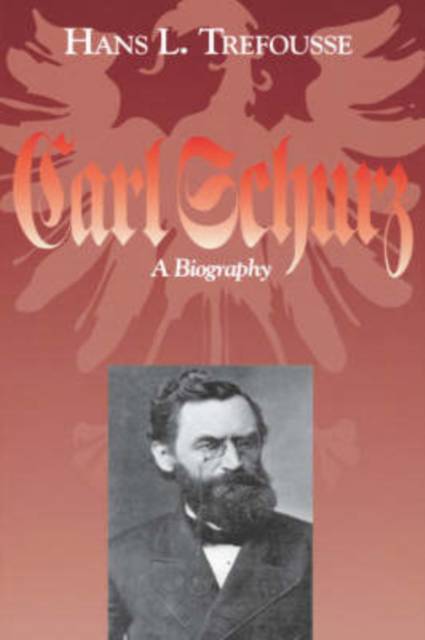
- Afhalen na 1 uur in een winkel met voorraad
- Gratis thuislevering in België vanaf € 30
- Ruim aanbod met 7 miljoen producten
- Afhalen na 1 uur in een winkel met voorraad
- Gratis thuislevering in België vanaf € 30
- Ruim aanbod met 7 miljoen producten
Omschrijving
The biography of Carl Schurz is a story of an amazing life. At the age of 19, Schurz, a student at the University of Bonn, became involved in the Revolution of 1848. Participating in the revolutionary army, he managed to escape through a sewer during the siege of Rastatt, flee across the Rhine to France, and come back to rescue his professor, Gottfried Kinkel, from a jail near Berlin. This deed made him famous, and when he came to American in 1852, Schurz was nominated for lieutenant governor of Wisconsin on the Republican ticket. He quickly rose in the party and was the head of the Wisconsin delegation at the 1860 National Convention. He worked hard for the cause, and Lincoln rewarded him with the post of Minister to Spain. At the outbreak of war he returned to join the Union Army, became a Major General, and took part in several important battles. After the war, he moved to Missouri, was elected Senator from that State, and became a role model for his fellow German Americans. In 1871 he became one of the main figures in the Liberal Republican movement, and in 1877 President Rutherford B. Hayes appointed him Secretary of the Interior.
After his retirement from the cabinet, Schurz became active in the politics of New York, as an advocate of municipal and civil service reform. He was a leading Mugwump who supported Grover Cleveland in 1884 and at the end of his life became a violent opponent of imperialism. He died in 1906. Carl Schurz, the man, his story, his ideals and his example, are particularly appropriate today because of the light his life sheds on the never-ending problems of immigration, assimilation, and the retention of ethnic identity. Carl Schurz's career furnishes a model example for all of these.Specificaties
Betrokkenen
- Auteur(s):
- Uitgeverij:
Inhoud
- Aantal bladzijden:
- 386
- Taal:
- Engels
- Reeks:
Eigenschappen
- Productcode (EAN):
- 9780823218554
- Verschijningsdatum:
- 1/01/1998
- Uitvoering:
- Paperback
- Formaat:
- Trade paperback (VS)
- Afmetingen:
- 150 mm x 227 mm
- Gewicht:
- 635 g

Alleen bij Standaard Boekhandel
Beoordelingen
We publiceren alleen reviews die voldoen aan de voorwaarden voor reviews. Bekijk onze voorwaarden voor reviews.











